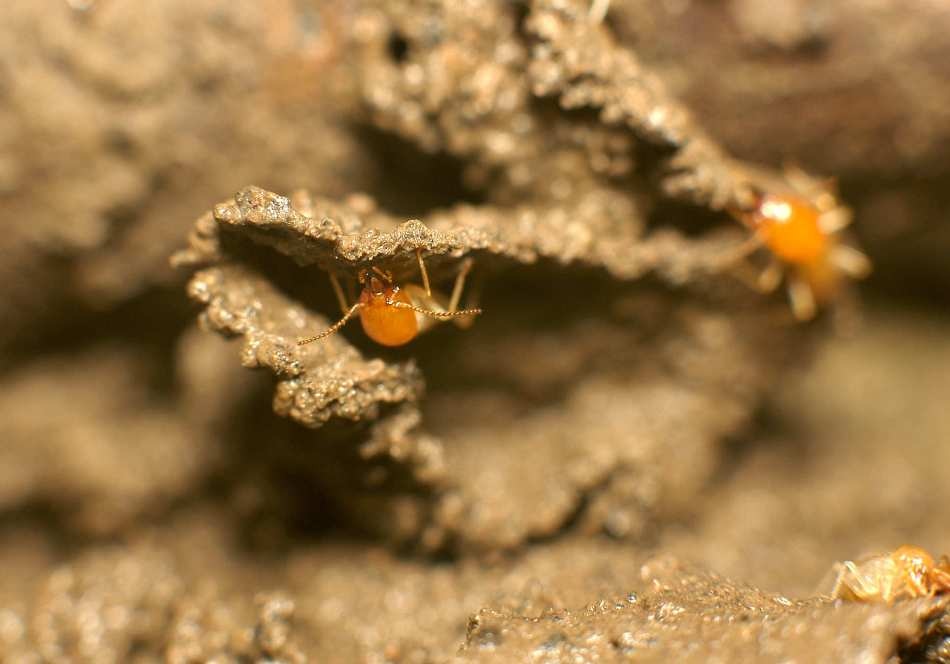Mar 14 2019
Robots and drones could construct and renovate future cities; however, it is possible only if they can work together, by mimicking the ploys of nature.
 Termites work together to construct a nest. (Image credit: Imperial College London)
Termites work together to construct a nest. (Image credit: Imperial College London)
A new review, reported on March 13th, 2019 in Science Robotics and co-authored by Imperial researcher Dr Mirko Kovac, who guides the Aerial Robotics Laboratory in the Department of Aeronautics, focuses on the sophisticated technology in robot construction and next step to be taken to make a robot-built environment a reality.
It is brought forth as the UKRI has announced a funding of £18 million to promote digital transformation of the construction industry, in which Dr Kovac is a cooperating investigator on a project with UCL, where his team will investigate robotic platform solutions for collective robotic construction.
The world is more and more urbanized, and scientists suggest that robots could be the ideal tools to help construct and maintain new cities. The use of robots should mitigate human risk, enable tasks to be accomplished more rapidly, and enable monitoring together with construction—the robots could gather data on everything they are performing, helping to enhance their training.
The cities of the future could be built and maintained by groups of land-based and flying robots working together to construct, assess, and repair the urban ecosystem of buildings and infrastructure. Nature provides ample proof that such collective construction is possible, and by applying some of these ideas to how drones are constructed, operated and made to cooperate, we could make this dream a reality.
Dr Mirko Kovac, Aerial Robotics Laboratory, Department of Aeronautics, Imperial College London.
Learning from Nature’s Builders
The research team explored examples from nature where groups of organisms employ various means to work together in construction. Several animals in groups follow and take advantage of their environment while building or renovating their houses.
For instance, if beavers hear rushing water, they will put the construction material in that region of the dam until the sound reduces. Termites, which exist in big “super-organism” colonies, depend on pheromones discharged during deposition of materials to organize construction. Several birds make nests as small colonies, organizing the gathering and distribution of nesting materials.
Investigating these techniques of coordination can help scientists create algorithms for how groups of robots and drones could autonomously work in tandem during construction. However, the team at Imperial is also creating drones that are related to nature in a different manner, that is, by their design and the composition of materials.
The research team at Imperial is also developing individual “soft aerial robots,” which are drones composed of smart materials and structures that can energetically cooperate with their environment. These comprise of a drone that can dive and jump like a gannet and a spider-inspired drone that can form webs of tensile material and even suspend itself from them.
Stepping Up to Construction
Prior to working together on construction, drones are being trained by repairing existing buildings and infrastructure, for example, repairing pipeline leaks.
This vital step will enable scientists to develop drones that respond to the requirements of a building while working together with its human inhabitants. In a new joint venture known as the NEST Aerial Robotics Hub—a partnership between scientists at Imperial and the Swiss Federal Laboratories of Material Science and Technology (Empa)—drones will patrol a building to detect and repair small issues together with human inhabitants.
The team also mentions that these developments would help other fields where human intervention is difficult or too time-consuming, such as in constructing emergency shelters after natural disasters, which would be 3D printed from flying drones.
Spider drone spins a tensile web
(Video credit: Imperial College London)